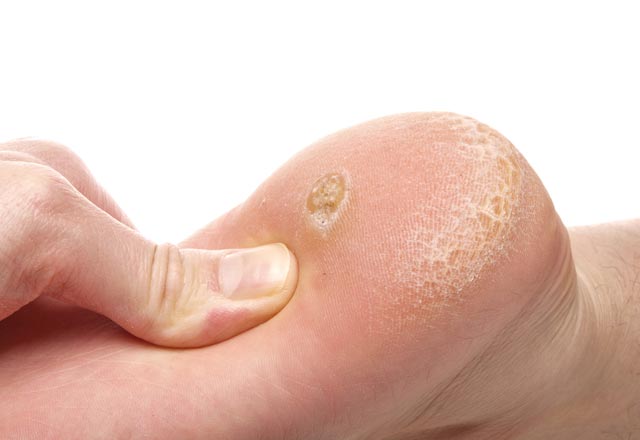A plantar wart, medically known as a verruca, is a virus (specifically, the Human Papillomavirus) that is often transmitted in our childhood years, though can be transmitted at any age. The virus infects the outer skin layer, causing a lesion to appear at the surface of the skin on the bottom of the feet.
A verruca tends to have a rough feel on the surface of the skin, may have an irregular (not always circular) shape and may have dark dots throughout the lesion, which are actually small blood vessels. While they are not always painful when pushed down on, they may elicit pain when squeezed from the sides. Warts may present as a single wart or in groups, and the sizes can vary greatly.
Dry needling works by stimulating the body’s immune system to clear the infected viral cells. Because the virus is confined to the top layer of the skin (epidermis), it is thought that it is overlooked by the immune system and not acted upon or cleared.
Dry needling uses a very thin needle to repeatedly puncture the wart and push the infected cells into the deeper layers of the skin (dermis) so that it is detected by the body’s immune system. This triggers an immune response that results in the production of the right antibodies to clear the virus. Over the following week, the plantar wart undergoes a natural deterioration before ultimately disappearing.

There may be some slight discomfort for the first couple of days and pain relief may be taken to ease this as long as it is not aspirin-based. The site of the procedure will be checked by your podiatrist after two weeks to check healing and remove scabbing, and again after eight weeks to measure the degree of regression of the plantar wart.
The surgical excision of plantar warts works by removing the wart in its entirety from the top layer of skin in the foot. Essentially, the infected viral cells that comprise the wart are separated from the healthy, surrounding skin and the ‘scooped’ out of the skin. Surgery is typically indicated when the wart is present on a painful and high-pressure area of the foot, which in turns interferes with carrying out daily activities, causing you discomfort and pain.

The total recovery time typically takes up to four weeks, depending on the patient and the size and location of their plantar wart. There may be some slight discomfort for the first couple of days and pain relief may be taken to ease this as long as it is not aspirin-based. You will have a follow-up appointment within the first week of your procedure to re-dress the surgical site where you will be given a take-home dressing pack to continue re-dressing your foot at home. You will be given home-care instructions on how to care for your feet and achieve the best healing outcomes.
As with any treatment for plantar warts, there is no guarantee that the wart will not return in the future, regardless of the treatment approach. This is because once infected, the HPV virus remains inside your body and may present as warts at different times in your life. Treatment focuses on removing painful, uncomfortable or unsightly warts that have a negative impact on your quality of life, and are successful in achieving this for the specific wart in question.
Keeping your family on their feet and helping them to walk, run, play and exceed their goals is why we love getting up in the morning.
Ground Floor, One Health Building
122 Remuera Rd, Remuera
Auckland 1050, New Zealand
| MON - FRI | 8:30am – 5:30pm |
| SAT | 9:00am – 4:30pm |
| SUN | Some availability |
Make an Appointment
Online Schedule